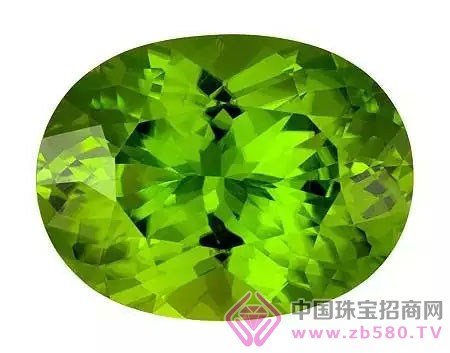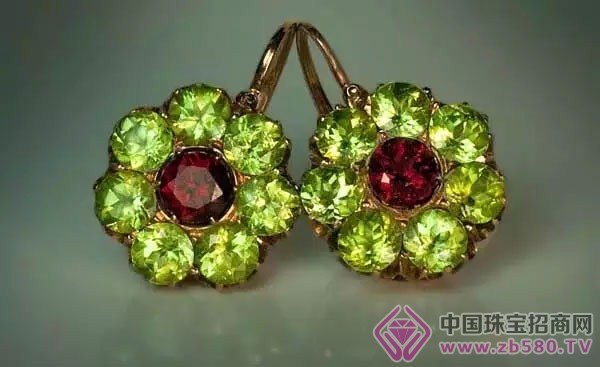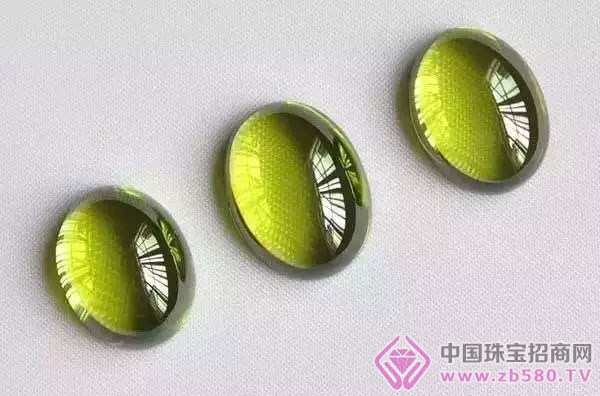As the birthstone of August, olivine is an ancient gemstone variety. The ancient Egyptians used it as an ornament in the AD more than 1,000 years ago, calling it "dusk emerald." The ancient Romans believed that the olivine had the magical power of the sun, which could expel evil, bring down the demon, bring light and hope to human beings, call it the "gem of the sun", and use it as a talisman. Peridot is also a commemorative jewel of the 16th anniversary of marriage!

The origin of the name of the olivine
Peridot, directly from French Peridot, and Olivine, derived from the Latin Oliva olive, is named after its color is similar to olives. Among them, the peridot Chrysolite is derived from Greek, meaning yellow stone.
Peridot gemstone characteristics
Olivine is an island-like silicate mineral with a chemical formula of (Mg, Fe) 2 [SiO 4 ] and is an orthorhombic system. The crystal form is often short columnar, and the aggregates are mostly irregular. Most of the colors are olive green, yellow green, golden green or grandmother green. The glass is shiny and transparent. The refractive index is 1.654-1.690, and the birefringence is 0.035-0.038. The pleochroism is not obvious, the dispersion is 0.020, the hardness is 6.5-7.0, and the density is 3.27-3.48 g/cm 3 . It is brittle, has poor toughness, and is prone to cracks.

Faceted edges are very obvious
Olivine has a high degree of dispersion and has a faceted phantom. Olivine also has the signature inclusion feature - Lilypad lily pads
Types and colors of olivine
There are several kinds of olivine, such as fayalite, forsterite, iron magnesium manganese peridot and so on. The varieties are different, their colors are different, and most of them have a glass luster.
Forsterite: forsterite, also known as bitter olivine, green to yellow
Tetralith: fayalite, light green yellow to yellow amber
Iron magnesium manganese peridot: Dunilite, also known as Tony olivine, yellow to orange red. (As shown below)
How to choose olivine
The value of olivine is mainly affected by color and size. Because of the many cracks in the olivine raw material, there are fewer raw materials that can grind larger gemstones, and the gemstone yield is low.
colour
The color of olivine is pure, and the dark green is the best. The color is even, and there is a feeling of gentleness and harmony. The more pure the green, the brighter the value. Bright yellow is also popular!
Cleaness
There are often more black solid or gas-liquid inclusions in the olivine. These inclusions will affect the value of the olivine. Therefore, the olivine containing black opaque inclusions and cracks are generally not used as gem-grade rings.
weight
Large particles of olivine are rare, semi-finished olivine is less than 3 carats, 6-10 carats are rare, and more than 10 carats are rare.
Cut
To flash, not leaking light, not too thick, the color saturation is good, ok.

Identification method
Appearance similar to olive stone has green tourmaline, diopside, wrong stone, glass, etc.; with polarizing or double shadow phenomenon can be distinguished from area glass and recalled aluminum garnet, synthetic spinel, plastic, fluorite; The refractive index and the birefringence ratio can be distinguished from diopside, emerald pyroxene, green tourmaline, gold emerald, and apatite.
It is a pyroxene that is nested with the olivine optical constant. It is effective to accurately determine the birefringence and density values. When the insert cannot measure the density, the comprehensive comparison of the inclusions, pleochroism, absorption spectrum and other differences is also beneficial.
Let's take a look at which gems are often confused with olivine. Green tourmaline is the most common type of olivine. The olivine green and green tourmaline are different in density, hue, gloss, absorption spectrum, birefringence and refractive index. The olivine is olive green, has a large birefringence and a hardness of 6.5-7. The composition is magnesium iron silicate.
In addition, gold emeralds, beryls, etc. are also very similar to olivine, which is easy to confuse, but glass is the only olivine on the market.
How to tell if the olive stone jewelry we purchased is made of real olivine or glass imitation? We mainly look at whether it has "double shadow". There is no double shadow in the glass, and the olivine has a very obvious double shadow. In addition, the glass contains bubbles, while the olivine contains crystalline inclusions.
With this knowledge in mind, when we buy the Peridot jewelry, we can easily distinguish whether the peridot jewelry we are buying is the true olivine of the glass imitation.
Identification points
Gemstones similar to olivine include green tourmaline, zircon, diopside, borologite, gold emerald, and calcium garnet.
The key distinctions are based on:
Lotus leaf inclusions in olivine
a. Difference in refractive index and birefringence
b. absorption spectrum
c. Relative density
d. Heterogeneity and facet double shadow feature.
e. Differences in gloss, hue and polychromaticity.

Peridot: Typical yellow-green is a distinguishing feature. The crystal has a rhombic columnar body with dense vertical stripes on the crystal face, and in most cases is a crystal fragment or a pebbly shape. Green tourmaline: a hexagonal column, a hexagonal column and a three-sided single-cone shaped or crystalline piece. The crystal face has dense vertical stripes, and the cross section of the crystal is a spherical triangle.
Zircon: square prism, square biconical and its polymorphism, the crystal surface is bright and lustrous, and the chromaticity is weak. More important. Feeling heavy.
Diopside: monoclinic gemstone, the crystal is short column and fragment, low hardness, poor wear resistance, and chromaticity.
Boehmite: brown to yellowish brown, pleochroism is obvious.
Gold emerald: The triple crystal is a pseudo-hexagon, plate-like and thick-plate crystal, crystal fragments and pebbles, and the surface of the crystal is bright and shiny.
Calcium aluminum garnet: The intact crystal form presents a rhombohedral dodecahedron, a tetragonal octahedron, and a growth pattern on the crystal surface.
Polyester Satin,Soft Satin Fabric,Satin Fabric Online,Printed Satin Fabric
SHAOXING ZISON TEXTILE & GARMENT CO.,LTD. , https://www.zisontextile.com